

Josh Kopp
Tournament Yellowbelly Enthusiast
Josh is based in Central NSW and has been fishing freshwater yellowbelly tournaments for a number of years, especially on Lake Windamere. Josh’s Windamere Yellowbelly Fishing Tips
- If you’re on a spot that holds yellowbelly and you’re not catching fish in the first 10 minutes, change spots. There’s no shortage of fish in the system, so find an active school and don’t waste time on inactive fish.
- When finding yellas on your sounder Josh finds the fish that are close to the bottom tend to be easier to catch than the ones further up the water column.
- In the early spring the fish will be 50:50 on the trees and the banks but as the water warms above 18 C the fish will move to the banks, so look around points and places where the wind blows directly onto it.
- A good strategy in spring is to find places where the bank is just within casting distance and the water depth is about 6m, especially where there are weedbeds. Josh likes to cast parallel with the banks so his lures are working at pretty much constant depth.
- Wind is your friend – fishing exposed shorelines puts you onto fish that have been activated by water oxygenation, stirring up of food and the cover of a broken water surface.Overcast conditions are good too.
- If the fishing is slow, try changing things up, adding scent to your lure, slowing down or using a little more finesse. Once you figure out what’s working on one school of Windamere yellas it will usually work on all schools across the storage.
Josh’s Windamere Yellowbelly Tackle
- A 7’ spin rod with a 2500 size reel, 10lb braid and 10lb fluorocarbon leader is a good all-round option that will cover most scenarios. Josh uses a stiffer rod (3-4kg) when he’s fishing with lures with single hooks (eg vibes with assist hooks) and switches to a slightly shorter rod (6’6”) for vertical grubbing.
Josh’s Windamere Yellowbelly Lures
- Ecogear ZX40 blade in Dark Night colour is a very good option for Windamere in spring. This lure can be jigged, fished vertically or cast traditionally. Josh likes to use it on banks that have plenty of weed as it’s a good lure to rip through. They’re great early in the season when the fish are still slightly slow to get moving. Let the lure hit bottom, rip it and then let if sit on the bottom for up to 1 minute. Each hop needs to only be 100-200mm and just enough to get the lure vibrating. Fish will dig through the weed and often take the stationary lure, so watch for tick on the line.
- A 95mm soft vibe such as the Jackall Transam or Zerek Fishtrap retrofitted with assist hooks is a great option when the fish are more active. It’s fished in much the same place as the ecogear blade, but is worked by slow rolling it through the weed whilst shaking the rod top to impart action. After 10-15 seconds you can let the lure hit the bottom and let is sit there for a few seconds to a minute before commencing the retrieve again.
- A 3” grub such as the Berkley Grub or Daiwa Bait Junkie on a 1/4oz jig head is perfect for vertical fishing trees. Josh likes the camo colours, especially ones with UV in them. He’ll drop the lure to the bottom and slow roll it vertically back up. Alternatively, he’ll lift the rod whilst tapping the rod butt with his hand to create more darting activity in the lure. If you see a fish follow, lift the rod a little quicker and you’ll usually get the strike.
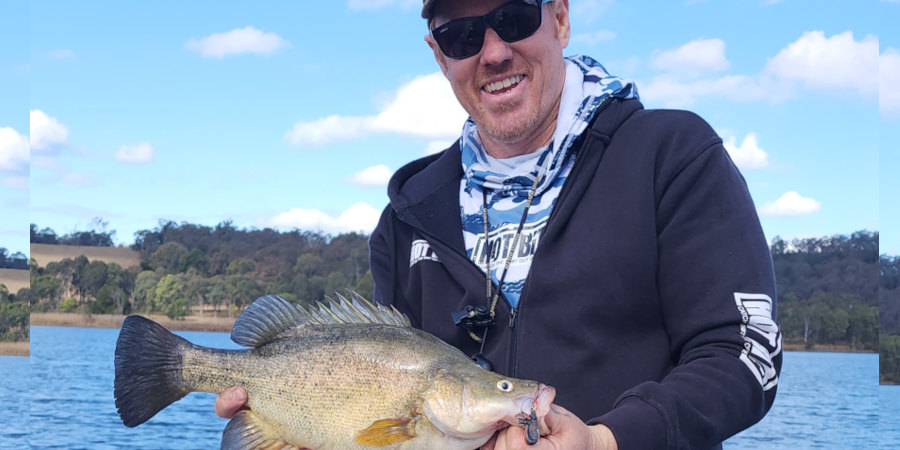
Conquering Cooby And Cressbrook Yellowbelly With Jason Ehrlich
Jason Ehrlich takes us to Cooby and Cressbrook Dams in search of yellas, and share a bunch of little known tips and insights along the way.
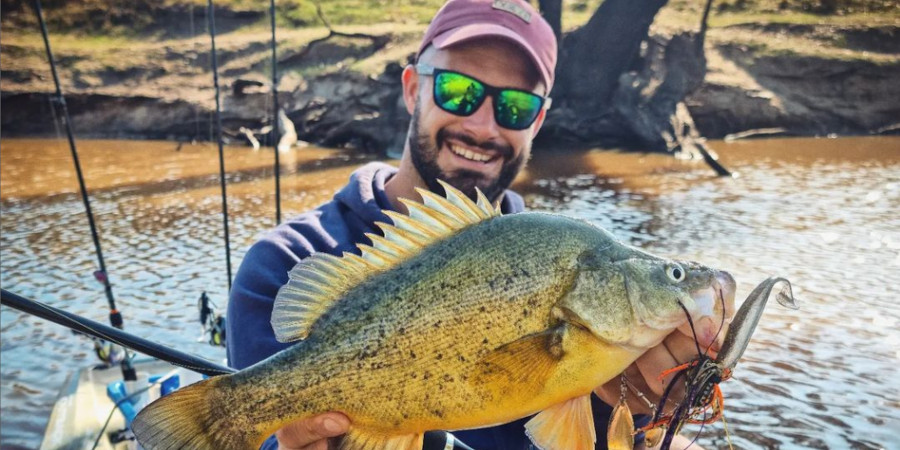
Episode 615: Wimmera Yellowbelly With Mitch McMaster
Victoria’s Wimmera region is a well kept secret when it comes to Australia’s freshwater natives. Fortunately, Mitch McMaster has them figured out and doesn’t mind sharing a few tips!

Conquering Cooby And Cressbrook Yellowbelly With Jason Ehrlich
Jason Ehrlich takes us to Cooby and Cressbrook Dams in search of yellas, and share a bunch of little known tips and insights along the way.

Episode 615: Wimmera Yellowbelly With Mitch McMaster
Victoria’s Wimmera region is a well kept secret when it comes to Australia’s freshwater natives. Fortunately, Mitch McMaster has them figured out and doesn’t mind sharing a few tips!
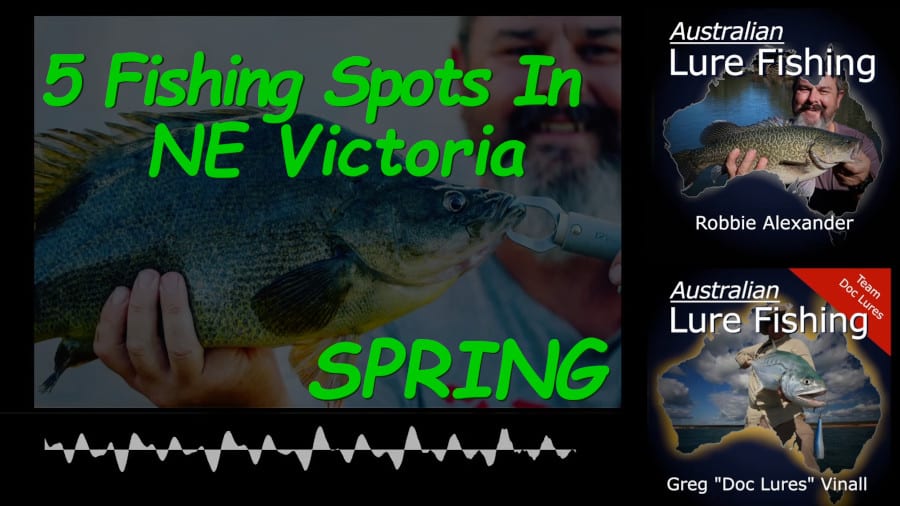
Episode 539: Top Fishing Spots In NE Victoria During Spring With Robbie Alexander
NE Victoria starts to fire up during the spring period and Robbie Alexander wastes no time taking advantage of the yellowbelly, cod, redfin and trout opportunities that become available. In today’s interview Robbie shares his best advice for top spring time fishing spots.
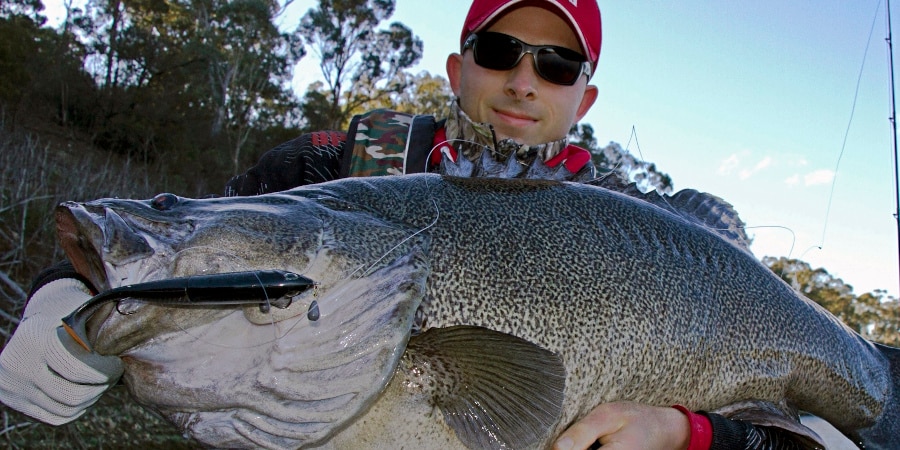
Episode 520: Five Best Winter Fishing Spots Around Canberra With Romen Dicovski
Winter fishing around Canberra might be a chilly affair, but the locals know it’s when some of the best fishing and the biggest cod, yellowbelly and redfin are caught!
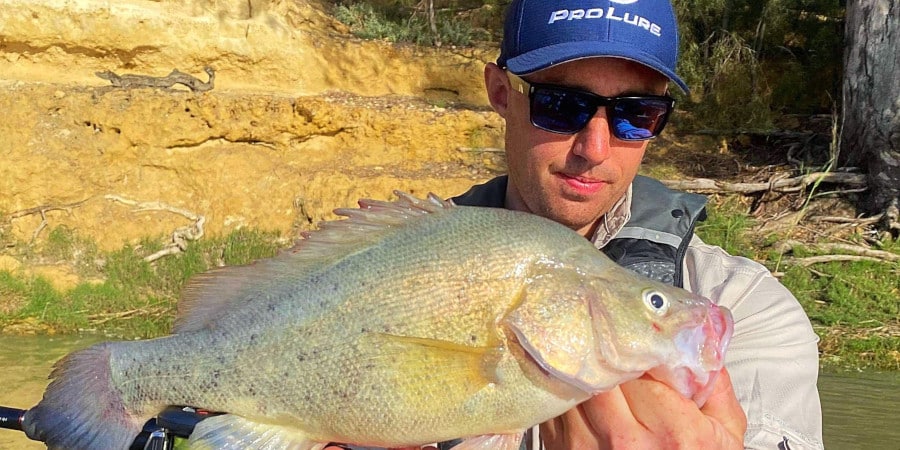
Episode 519: Five Best Fishing Impoundments In South Australia With Alex Williams
South Australia’s impoundment native fishery is relatively new but is shaping up to be something really special! Alex Williams takes us to the best five impoundment fishing destinations in SA today and explains exactly how to go about targeting some iconic aussie species.


What kind of assist hooks (size etc) are being used with the soft vibes